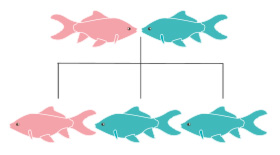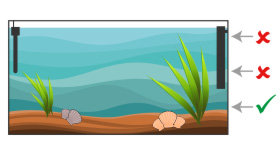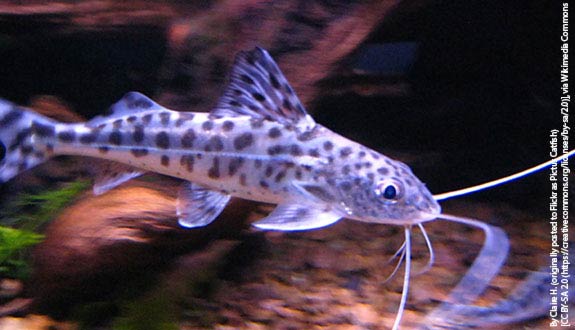

Alternative species (click on the thumbnail to see the card)
Names
Scientific name
Pimelodus pictus
Pimelodella picta
Silurus clarias
Common name
Pictus catfish
Pictus cat
Origin

Origin: Brazil, Colombia, Venezuela and Peru
Biotope: Amazonian
Dimorphism

None
Group

Pimelodidae
Volume

280 L / 62 imp gal / 74 US gal
Parameters

T°: 23 to 26°C or 73 to 79°F
pH: 6.5 to 7
Hardness: 3 to 8°dGH
Difficulty

Average
Size

10 to 12cm (4 to 4.8")
Longevity

10 years
Living zone

Depth
Individuals

3
Food
How to feed the Pictus catfish?
Food
How to feed the Pictus catfish?
This fish is an omnivore with a carnivorous tendency. The major part of its diet will therefore be composed of meat foods such as bloodworms, tubifex, artemia, krill, beef heart, fish and shrimp flesh, gammarus. For the vegetable part: salad and previously blanched spinach. Complete with traditional aquarium food: flakes, tablets for ground fish.
This fish really has a big appetite! But this is normal when you think about it, with all the energy it spends :) To make up for this voracity, distribute a meal before the light goes on, and another one after it goes off.
Behavior
What kind of behavior does the Pictus catfish have?
Behavior
What kind of behavior does the Pictus catfish have?
It is one of the most peaceful fish in its family.
When it lives in a group, this fish shows a very active temperament, even nervous at times. It constantly swims along the windows, swimming like a shark. Conversely, if it feels isolated, it will spend its time hiding... What a pity!
It has tried to concentrate its activity at dusk and at night, when it is (relatively) calm during the day.
Cohabitation
Who can live with the Pictus catfish?
Cohabitation
Who can live with the Pictus catfish?
First of all, he will absolutely need the presence of his snowdrifts for his well-being. A group of at least 3 individuals is the union minimum for proper maintenance. But you can do better! Install a group of 6 in a 500-litre aquarium (110 impg Gal / 132 US Gal), and there you are at the top!
Avoid the association with small fish under 4cm (1.6") because the Pimelodus will see them as his dinner (so forget the cohabitation with Guppies, neon...). Likewise, don't associate them with fish that are too shy or too calm which could be disturbed by its "turbulent" side.
It can live in a community aquarium with large American Cichlidae, large Characidae or Cyprinidae or with Melanotaenias for a less specific aquarium.
Breeding
How to breed the Pictus catfish?
Breeding
How to breed the Pictus catfish?
Almost impossible for most aquarists.
Its aquarium
Which aquarium for the Pictus catfish?
Its aquarium
Which aquarium for the Pictus catfish?
First of all, the decoration must leave enough space in front of the windows because this fish likes to swim lengths. It will also appreciate the resting places formed by big roots and stones (not protruding): ideal hiding places to protect itself from the light during the day! Complete with a few robust plants such as Elodeas, Valisneria gigantea or Anubias barteri. You can hang some of them directly in the decor and not planted in the ground because the Pimelodus tends to uproot fragile plants by digging into the ground.
As this species lives close to the bottom, the substrate must not be sharp (like quartz for example, comparable to pillaged glass). Fine sand or sand from the Loire Valley will be perfectly suited to the habits of the species. Put a layer of about 5/6cm (2/2.4").
This species does not like too much light. Sift your lighting with floating plants and never expose your aquarium to direct sunlight.
The filtration will be powerful to ensure a good oxygenation of the water and an irreproachable cleanliness. Adjust the discharge below the surface so that the current goes all the way to the bottom of the aquarium: a delight for your Pimelodus who love the current!
As these big fish are quite polluting, make water changes of 25/30% each week.
Good To know
Find all additional information!
Good To know
Find all additional information!
Its three pairs of barbels are tactile organs with which it searches for food.
It has sharp weapons: the thorny rays of its dorsal and pectoral fins. They are easily caught in the mesh of the landing nets. Instead, use a plastic box and be very delicate when handling it.
In the wild, this fish can grow up to 20cm (7.9")! In aquariums, it rarely exceeds 10/12cm (4 to 4.8").
Yours photos!
Comments
Sort by:
Please login to post comments

